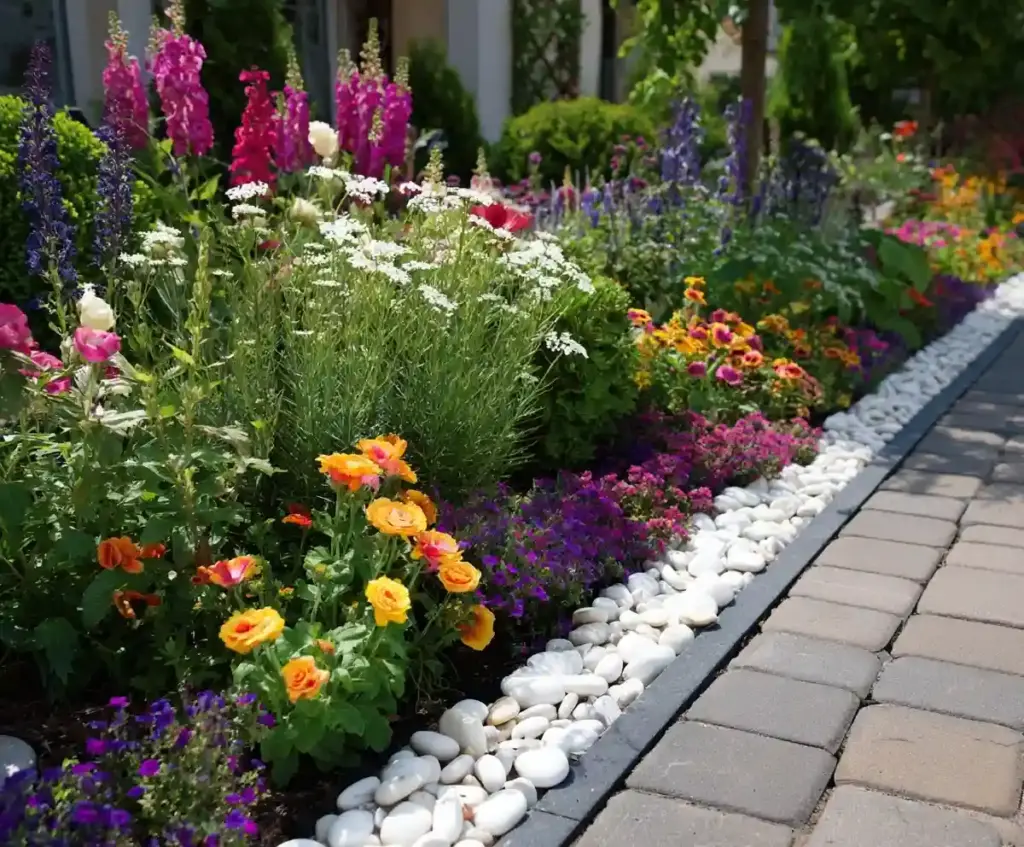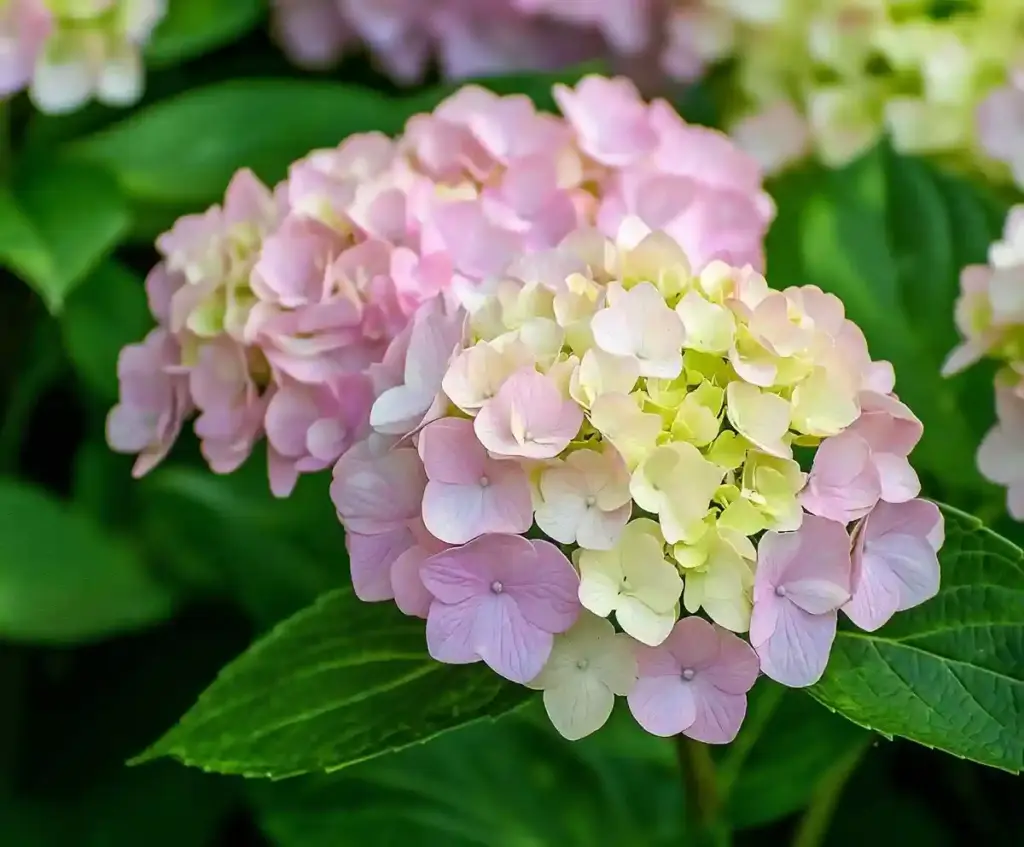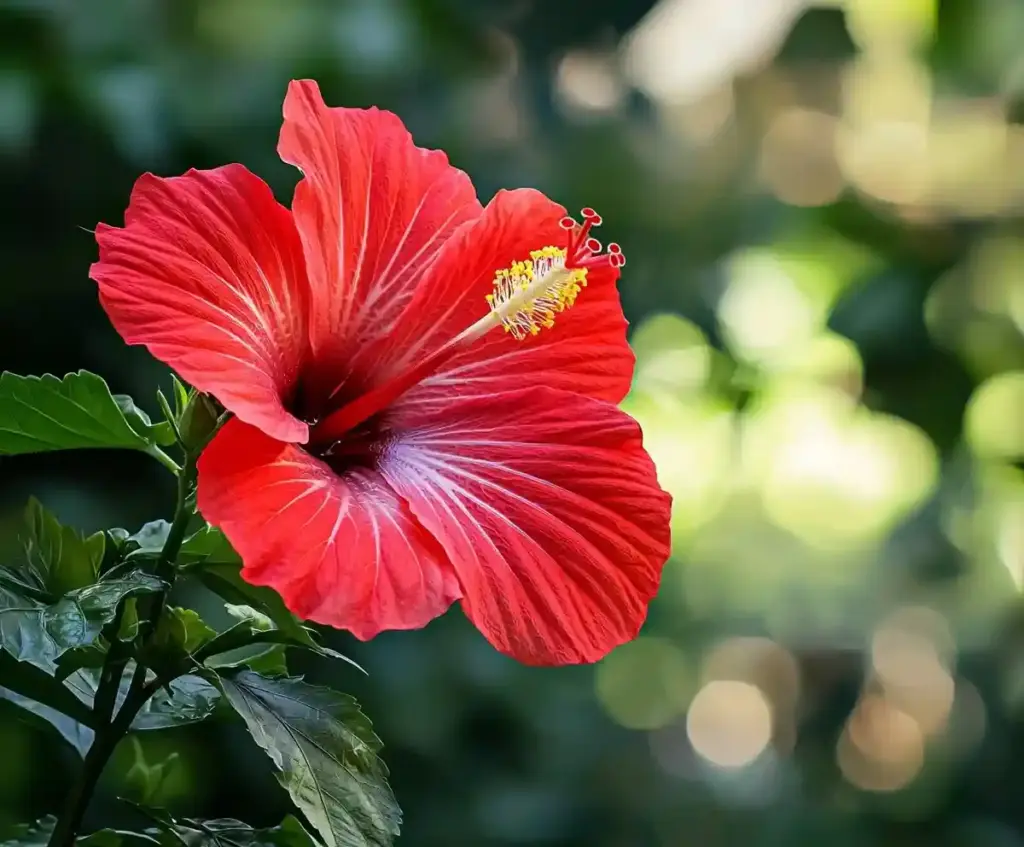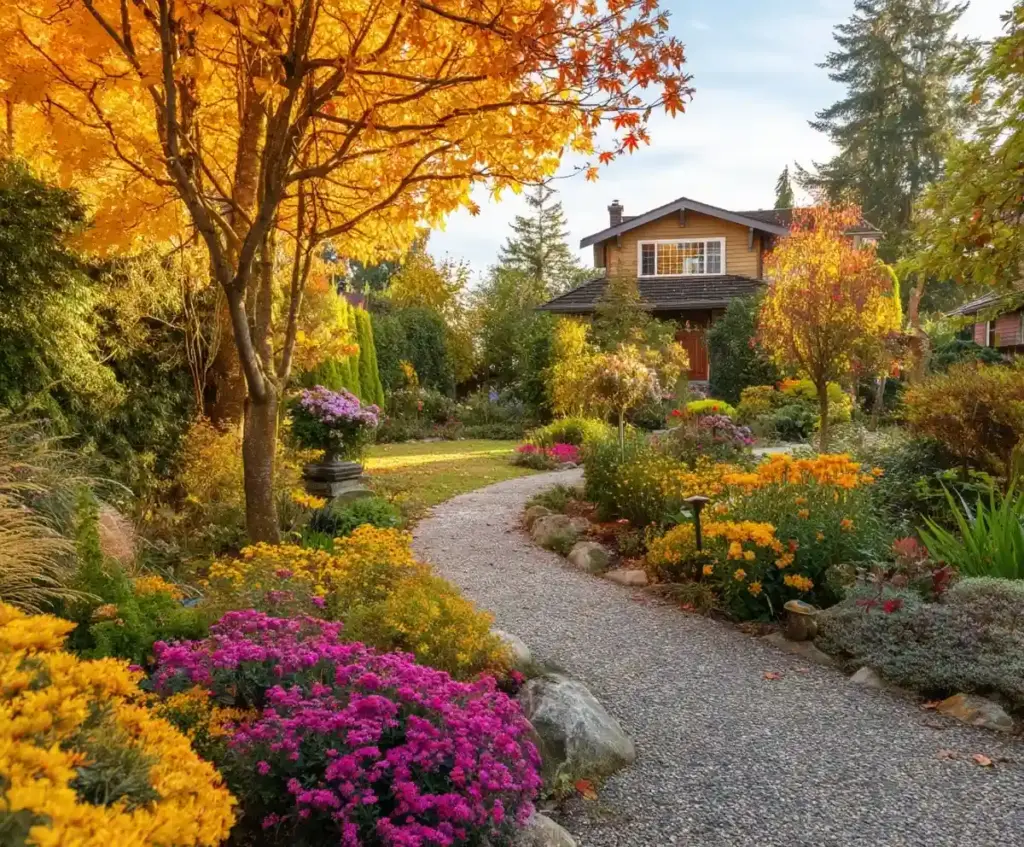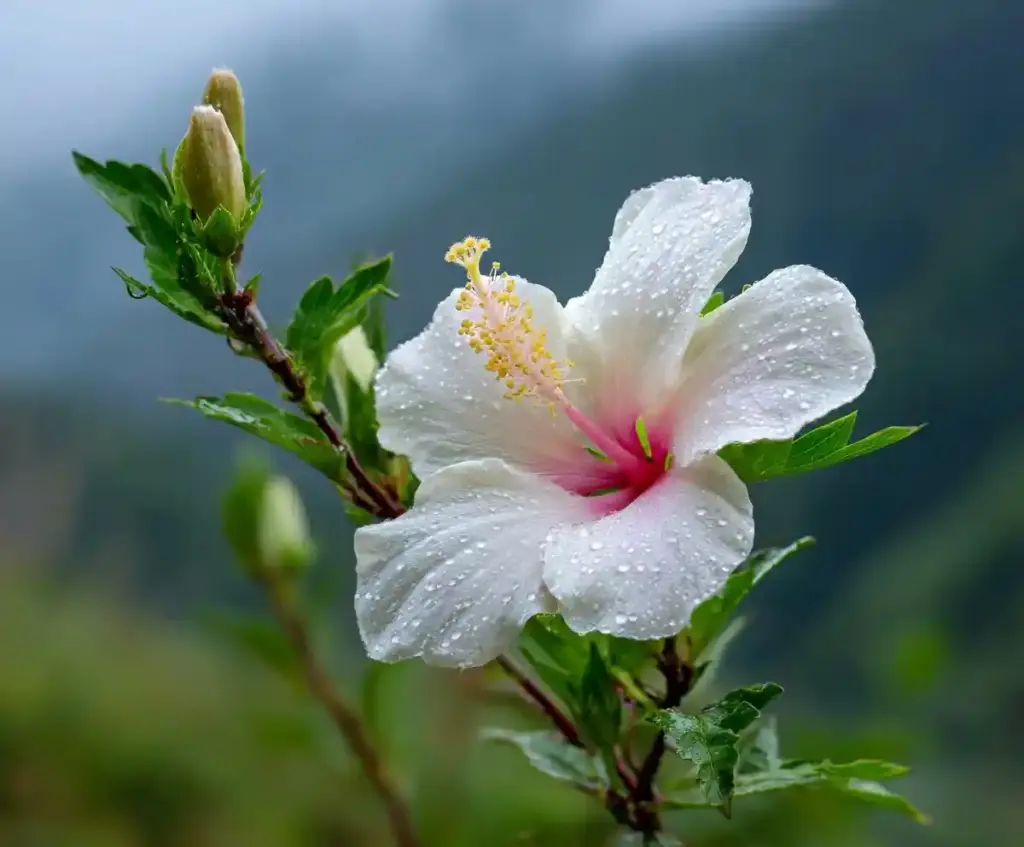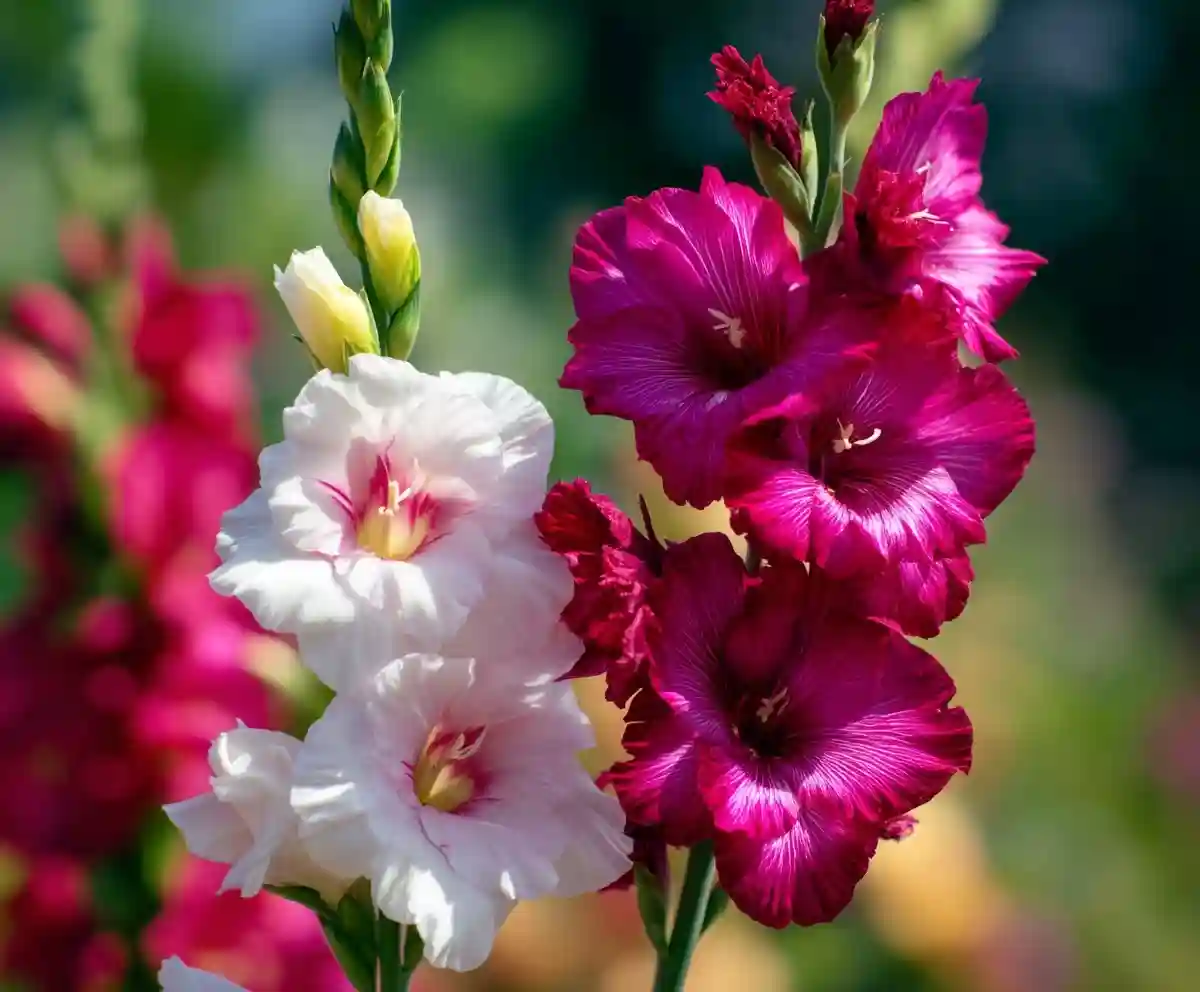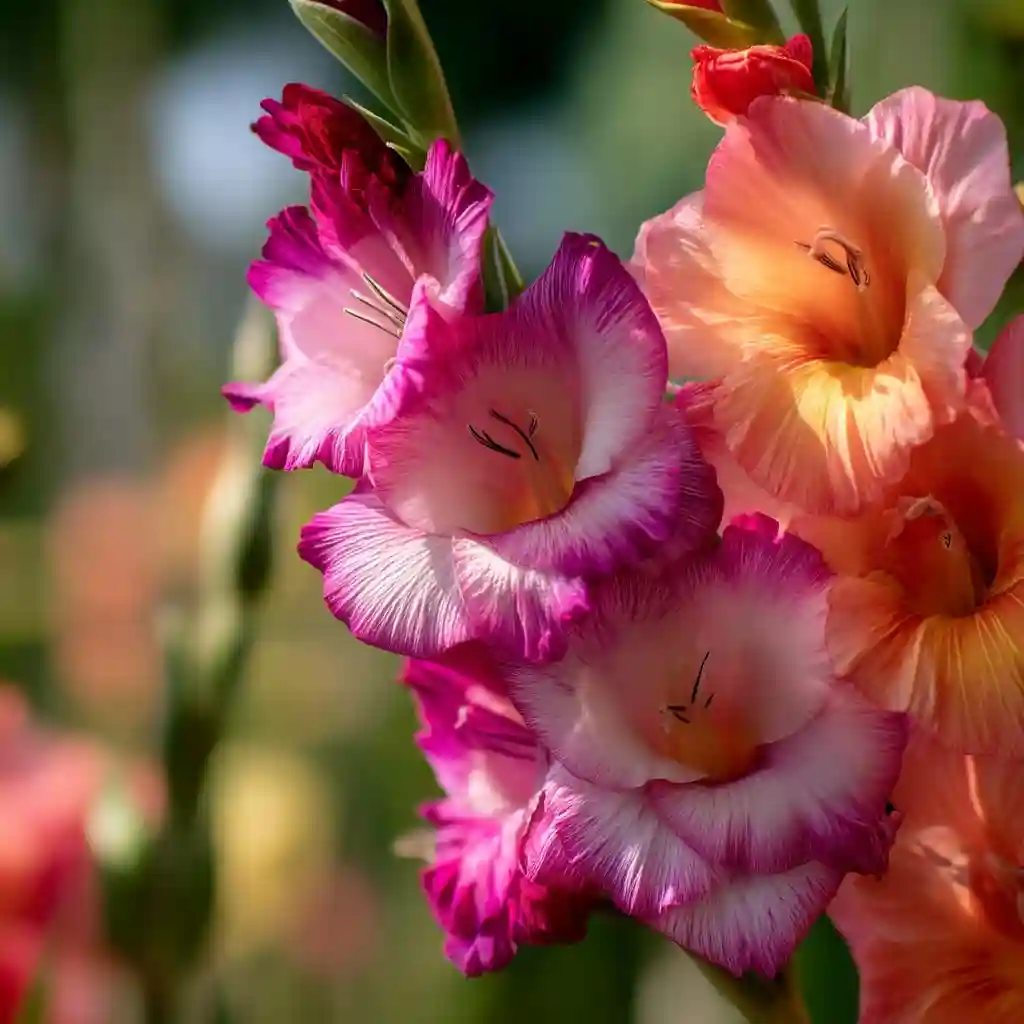Gladiolus vs hollyhock — which one deserves a spot in your garden? Whether you’re planning a summer bloom explosion or designing a cottage-style border, these two classic flowers often compete for attention. Both bring striking color and height, yet the difference between gladiolus and hollyhock goes beyond just their looks.
Gladiolus, with its sword-like leaves and funnel-shaped flowers, often blooms in a dramatic vertical line. Hollyhocks, on the other hand, charm with their old-fashioned, ruffled blooms and a more natural, sprawling presence.
Choosing between them depends on your garden style, climate, and maintenance preferences. In this guide, we’ll compare everything from color vibrancy to drought tolerance to help you decide which flower is the better fit.
Table of Contents
🌸 Which Is More Colorful: Gladiolus or Hollyhock?
When comparing gladiolus vs hollyhock, color is often one of the first deciding factors. Both flowers are known for their beauty, but they differ in palette and intensity.
Gladiolus are famous for their vivid, almost electric hues. You’ll find them in shades of deep red, hot pink, coral, lavender, bright yellow, and even bi-color combinations. Their tall spires are packed with blossoms from top to bottom, creating a bold vertical accent in any flowerbed. If you’re after a dramatic splash of color that grabs attention, gladiolus is hard to beat.
Hollyhocks, on the other hand, offer a more rustic and romantic feel. They bloom in soft pastels like peach, pale yellow, blush, and cream, but can also surprise you with deeper tones like maroon and even near-black. Hollyhocks tend to have a more relaxed flower structure, which gives gardens a charming, slightly wild look.
Color Comparison at a Glance:
- Gladiolus: Vibrant, high-contrast colors, often in multi-colored blooms
- Hollyhocks: Softer tones with some deep shades, perfect for cottage gardens
So if you’re looking for saturated, high-impact color, gladiolus takes the lead. But for subtle, romantic charm, hollyhock wins hearts.
🌱 Which Flower Grows Faster: Gladiolus or Hollyhock?
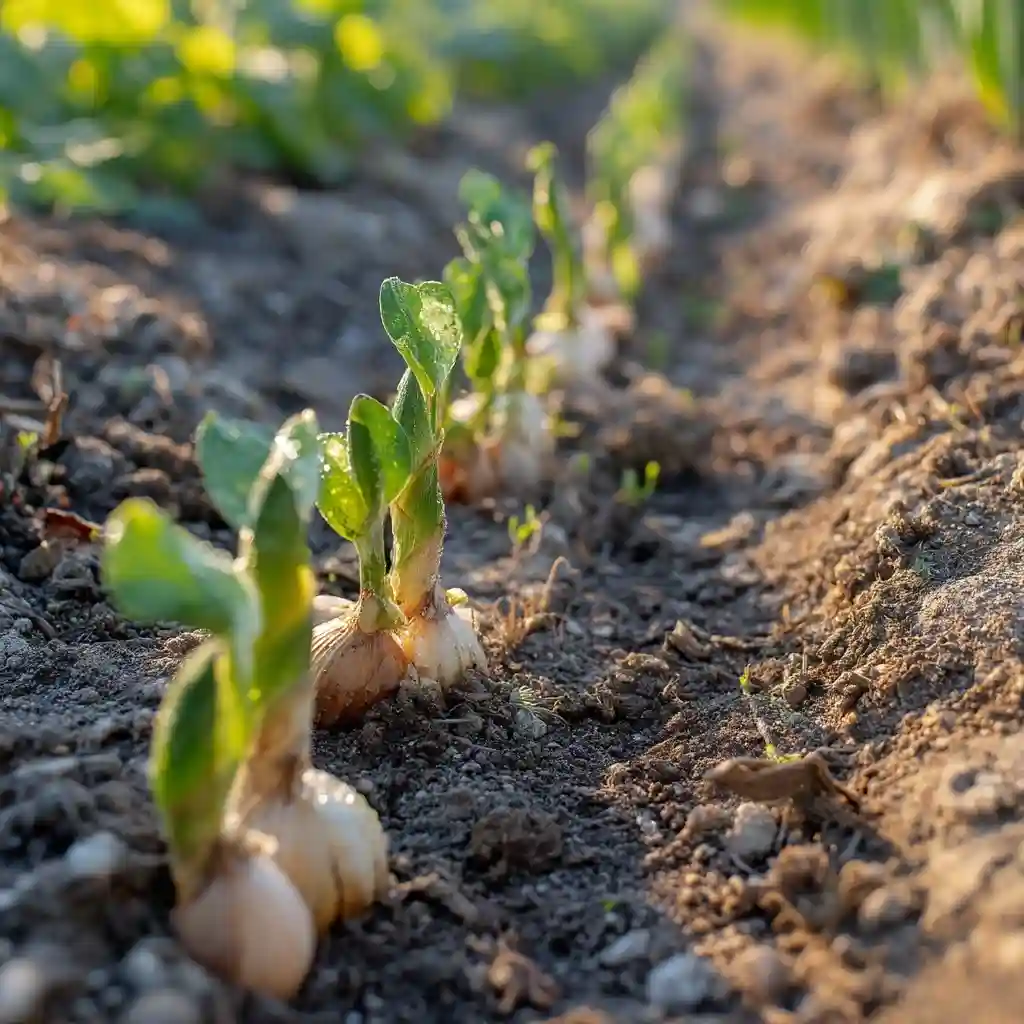
When deciding between gladiolus vs hollyhock, growth rate can play a big role — especially if you’re planning seasonal displays or want fast results.
Gladiolus typically bloom within 70 to 90 days after planting. Since they grow from bulbs (corms), their development is steady and predictable. You plant them in spring, and by mid to late summer, tall flowering spikes begin to emerge. They’re ideal for gardeners who want to see vibrant results within a single growing season.
Hollyhocks, depending on the variety, can take a bit longer to establish. While some modern cultivars bloom in their first year, traditional types often act as biennials — growing foliage the first season and flowering in the second. However, from seed, they germinate quickly (10–14 days) and begin forming strong roots and stems in the first few weeks.
Growth Speed Snapshot:
- Gladiolus: Flowers in 2.5–3 months; good for seasonal beds
- Hollyhock: May take longer to bloom if grown from seed; faster with nursery starts or first-year bloomers
If you’re short on time or want a guaranteed floral display this season, gladiolus is the faster, more reliable bloomer. But hollyhocks reward patience with long-lasting blooms and self-seeding potential for years to come.
☀️ Do Gladiolus Need Full Sun?
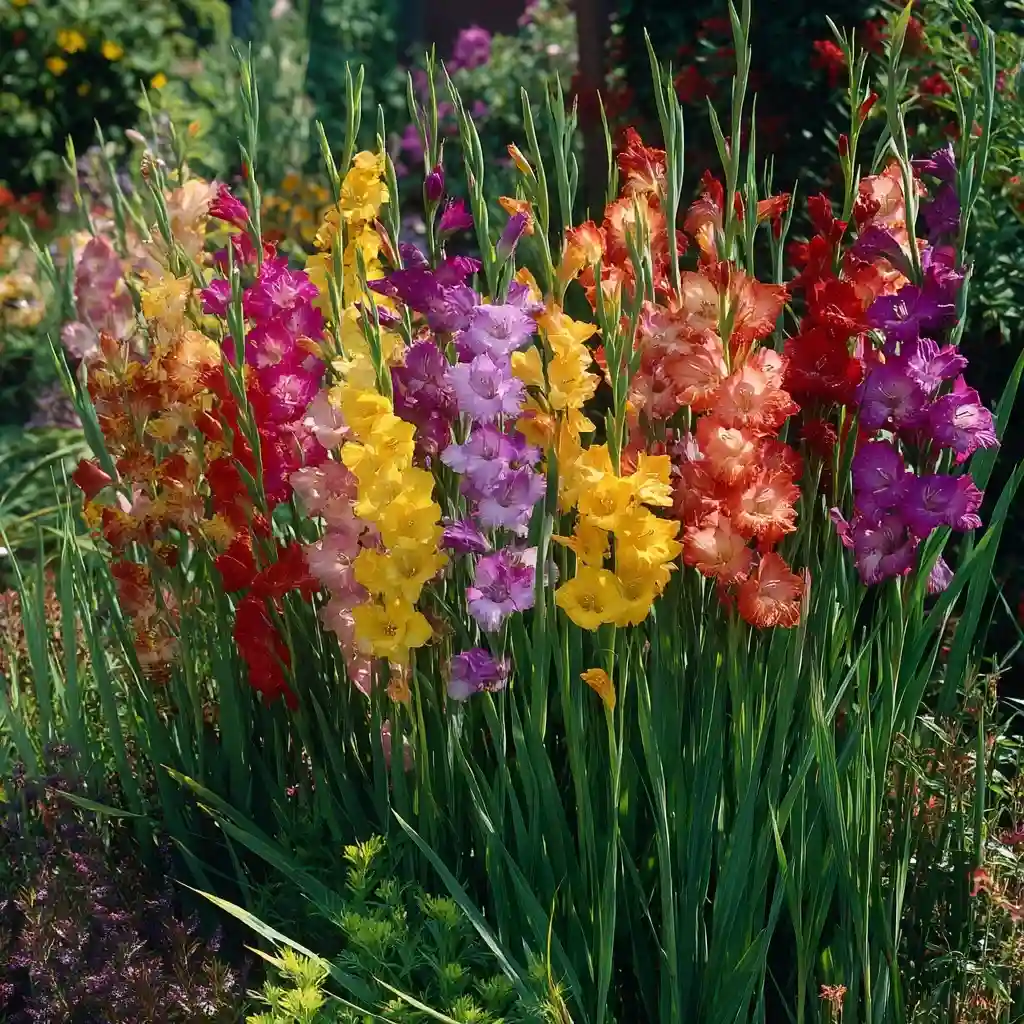
Sun exposure is a key factor when growing any flowering plant, and with gladiolus vs hollyhock, light needs can influence where you plant them.
Gladiolus thrive in full sun, requiring at least 6–8 hours of direct sunlight each day to reach their full blooming potential. Without enough light, these bold bloomers may grow leggy, weak, and produce fewer flowers.
While they can survive in partial shade, expect smaller blooms and slower development. Full sun ensures strong stems, vivid colors, and healthier plants overall.
If you’re gardening in cooler USDA zones (7 and below), it’s even more important to provide full sunlight to help gladiolus mature before early frosts arrive. In warmer zones (8–10), they can be treated as perennials and may come back each year with proper care and storage.
Tips for Best Results:
- Choose a sunny spot with at least half a day of direct light
- Avoid shaded areas under trees or near taller plants
- Use reflective mulch or light-colored surfaces nearby to boost light exposure
For gardeners seeking vibrant, upright blooms, planting gladiolus in full sun is non-negotiable.
🌞 Do Hollyhocks Need Full Sun?

Just like their floral rival, hollyhocks prefer sunny spaces to perform at their best. If you’re comparing gladiolus vs hollyhock in terms of light needs, both plants fall into the full-sun category — but hollyhocks are a bit more forgiving.
Ideally, hollyhocks need at least 6 hours of direct sunlight daily. In return, they’ll produce tall, flower-covered stems that attract bees, butterflies, and hummingbirds. The more sun they receive, the stronger their stalks and the more abundant their blooms.
That said, hollyhocks can tolerate partial shade, especially in very hot climates. If you’re gardening in a region with scorching summer afternoons, giving hollyhocks a bit of afternoon shade can prevent flower fade and reduce stress.
Key Sunlight Notes:
- Full sun (6+ hours) = best flowering and tallest growth
- Partial shade = acceptable in hot regions, but may lead to fewer flowers
- Air circulation matters: sunny, breezy spots help prevent rust and mildew on leaves
So while hollyhocks aren’t as demanding as gladiolus when it comes to sun exposure, planting them in a bright, open spot is still the best way to encourage their iconic cottage-garden look.
💧 How Often Do I Need to Water Gladiolus?
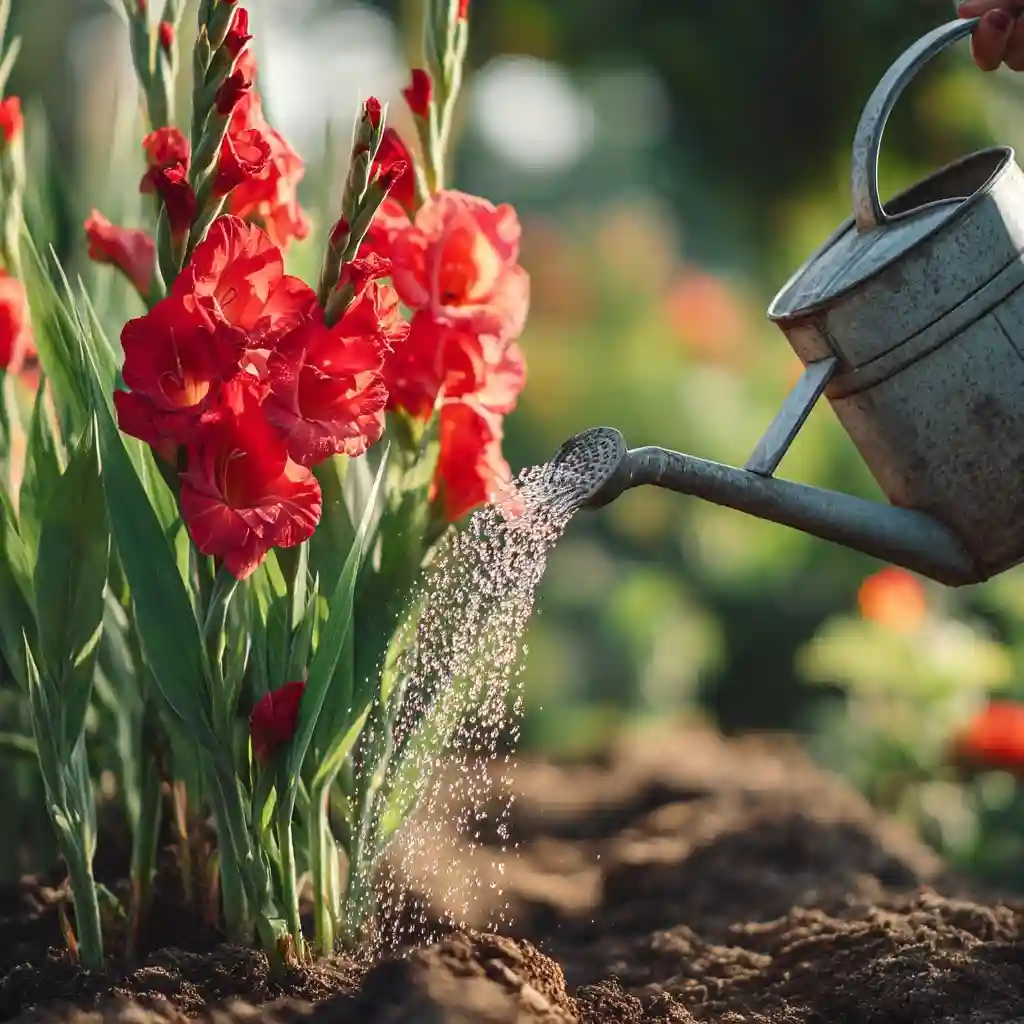
Watering is where many gardeners start to notice key differences in gladiolus vs hollyhock care. Gladiolus plants are relatively low-maintenance, but their success depends on a consistent watering schedule—especially during active growth and flowering stages.
In general, gladiolus need about 1 inch of water per week. This can come from rainfall or manual watering. During hot, dry spells or in sandy soils, you may need to water 2–3 times per week to keep moisture levels steady, particularly when plants are still developing.
Watering Guidelines for Gladiolus:
- Young plants: Water more frequently (2–3 times weekly)
- Established plants: Once weekly is usually enough
- Avoid soggy soil: Gladiolus bulbs are prone to rot if overwatered
- Best soil: Well-draining, sandy or loamy soil with organic matter
Always water at the base of the plant to avoid splashing soil onto the leaves, which can invite disease. A layer of mulch around the plants can help conserve moisture and stabilize the soil temperature.
Overwatering is just as risky as underwatering, so strike a balance based on your climate and soil type. Regular checks and adjustments go a long way toward keeping your gladiolus healthy and blooming.
🌵 Is Gladiolus Drought-Friendly?

When comparing gladiolus vs hollyhock, gardeners in dry or drought-prone regions often wonder which flower is more water-wise. The answer? Gladiolus becomes fairly drought-tolerant once established, but it’s not entirely hands-off.
During the early stages of growth, gladiolus bulbs need consistent moisture to sprout and thrive. However, as the plant matures, it can tolerate short dry spells—especially if planted in well-draining soil and mulched to retain moisture.
That said, gladiolus should never be left completely dry for extended periods. Infrequent deep watering is better than frequent shallow watering, as it encourages deeper root growth.
Tips for Drought-Friendly Gladiolus:
- Use mulch: A 2–3 inch layer helps hold moisture and keep roots cool
- Space bulbs properly: Good air circulation prevents fungal issues during dry weather
- Amend soil: Loamy or sandy soils help avoid waterlogging while retaining moisture
- Water deeply but less often: Especially important in hot, windy conditions
With thoughtful planting and watering habits, gladiolus can offer stunning blooms without being a water hog—making it a smart choice for eco-conscious gardeners.
💦 How Often Should I Water Hollyhocks?
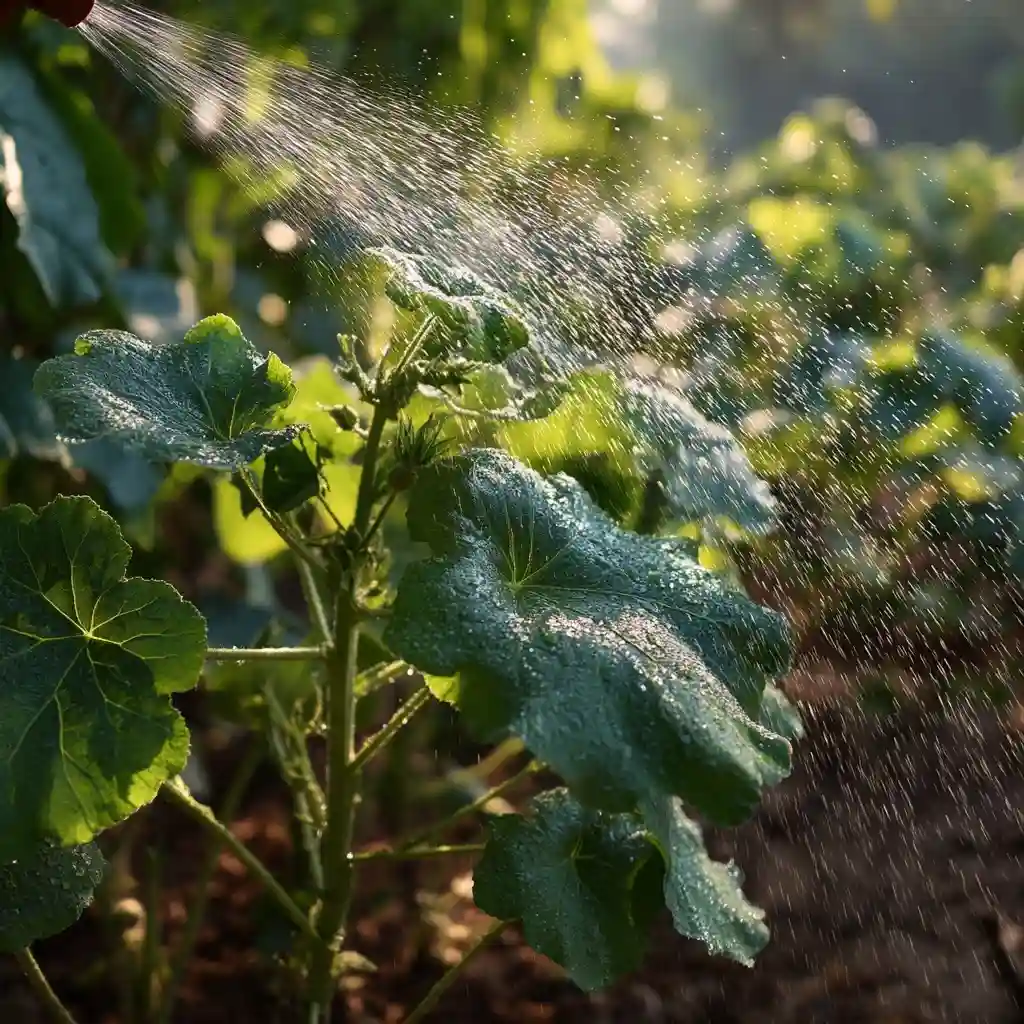
In the gladiolus vs hollyhock watering debate, hollyhocks are surprisingly resilient. They’re not as picky as many other flowering plants and become more drought-tolerant as they mature. That said, proper watering during their active growing season is essential for strong, bloom-covered stalks.
For most conditions, hollyhocks need 1–2 inches of water per week, depending on climate, soil, and sun exposure. During hot or windy weeks, or if they’re planted in sandy soil, they may require watering up to 3 times weekly.
Watering Best Practices for Hollyhocks:
- Young plants and seedlings: Keep soil consistently moist but not soggy
- Established plants: Deep watering once or twice a week is often enough
- During blooming season: Increase frequency slightly to support flowering
- Use mulch: Helps retain moisture and regulate soil temperature
One great thing about hollyhocks is that they “tell” you when they’re thirsty. Wilting leaves or dry, cracking soil are signs to increase water. Just be careful not to go overboard—too much water can lead to root rot or fungal issues.
As with any plant, your local conditions will dictate exact watering needs. But overall, hollyhocks are fairly forgiving when it comes to moisture.
🚱 Can You Overwater Hollyhocks?
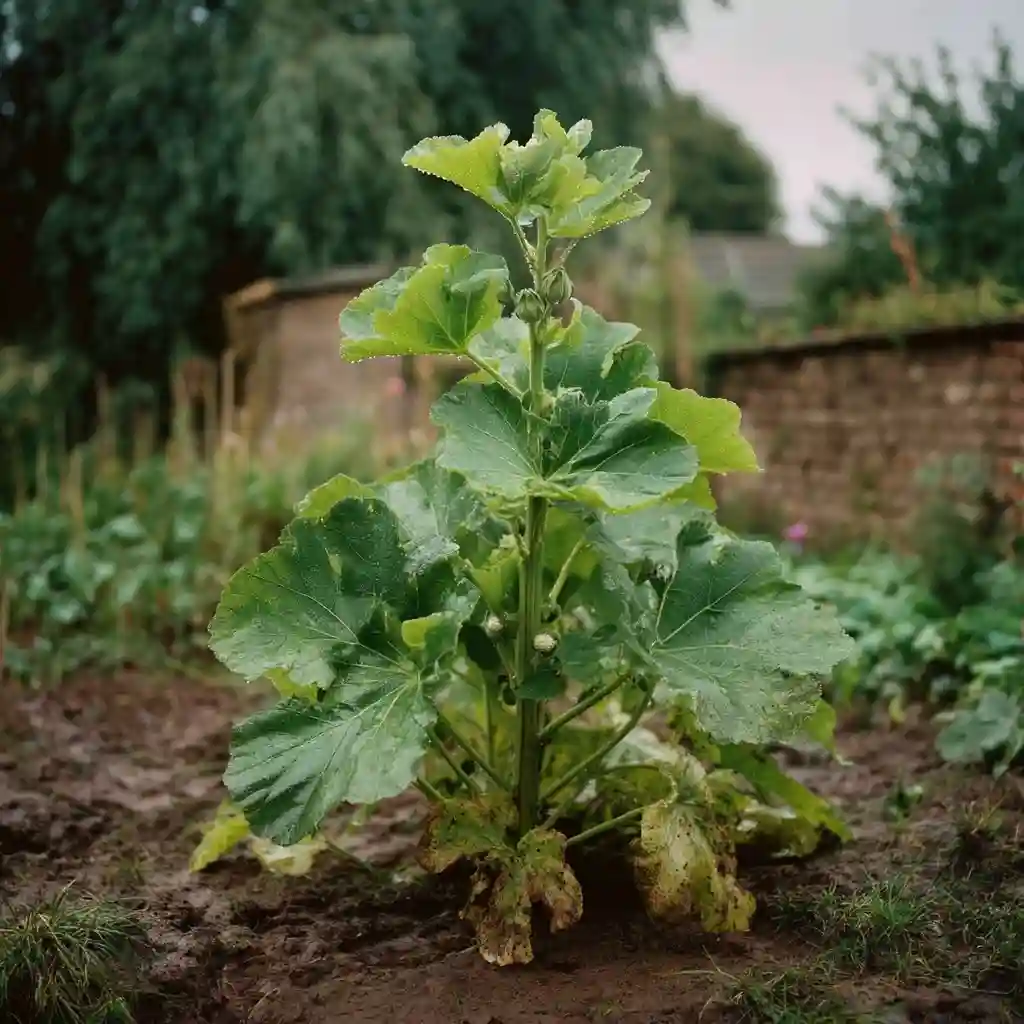
Yes—you can definitely overwater hollyhocks, and it’s a common mistake, especially for new gardeners eager to keep their plants happy. Although hollyhocks are tolerant of various conditions, too much water can lead to a host of problems, including root rot, fungal diseases, and poor blooming.
Like many perennials, hollyhocks prefer evenly moist but well-drained soil. Letting the soil stay soggy or waterlogged for long periods encourages “wet feet,” a condition these plants do not tolerate well.
Signs of Overwatering Hollyhocks:
- Yellowing or drooping leaves despite moist soil
- Mushy or blackened stems at the base
- Mold or mildew on leaves
- Foul-smelling soil near the roots
Tips to Prevent Overwatering:
- Water only when the top inch of soil feels dry
- Use raised beds or well-draining soil in heavy clay areas
- Avoid overhead watering to reduce fungal issues like rust
- Space plants well to promote airflow and faster drying
Overwatering can do more harm than a bit of drought. Once established, hollyhocks benefit from less frequent but deeper watering sessions that allow the roots to grow strong and deep.
🌼 Conclusion
When it comes to gladiolus vs hollyhock, the right choice depends on your garden’s style, your climate, and how much time you want to invest.
If you love bold, upright flower spikes with brilliant color and fast seasonal blooms, gladiolus is a fantastic pick. They’re ideal for structured garden beds and make excellent cut flowers.
🌿 Love gardening inspiration? Follow me on Pinterest for bold plant ideas, tips, and seasonal color!
More Posts
